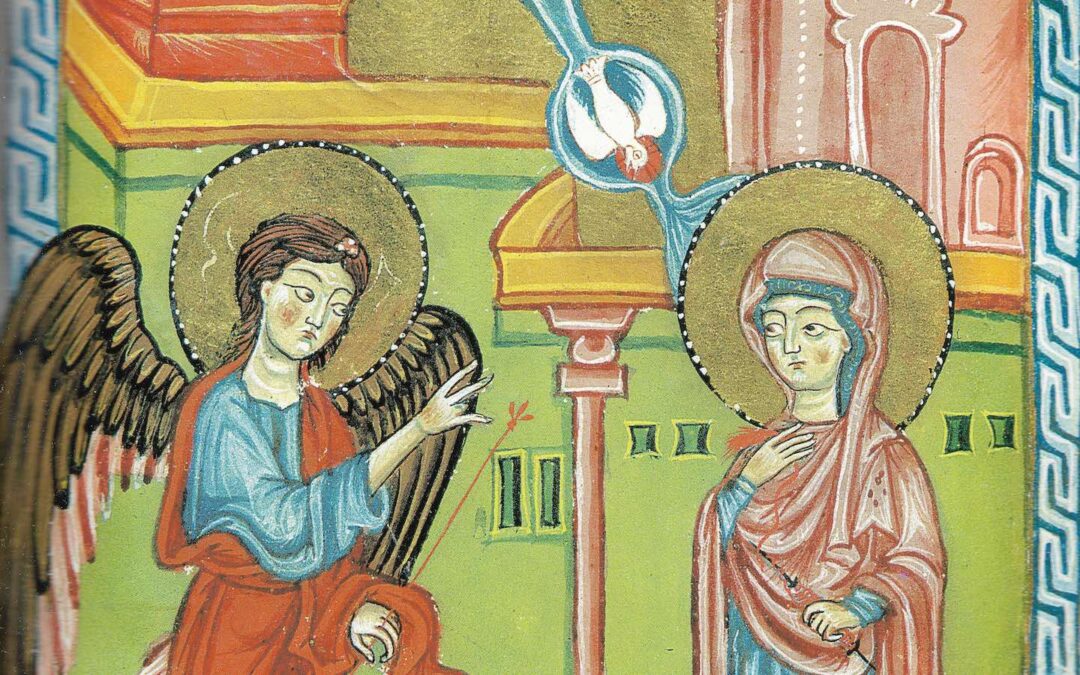The story of the embodied Christ in the Gospel of Matthew begins with controversy.
Mary is found to be with child before she is married, something that in the first century world would have been not only scandalous, but life-ending for Mary. Joseph, rather than taking the actions he was entitled to take as her fiancée, decided to dismiss her quietly.
He would not marry her, but he would also not shame her in front of her family and community. His decision was one of unexpected grace.
Even before Joseph knew that his fiancée was carrying the Son of God, he embodied the very characteristic Jesus would bring to the world.
In the Gospel of Matthew, we don’t hear a conversation between Mary and an angel about what is about to happen to her like we read in the Gospel of Luke. Instead, in the Gospel of Matthew, we only read that “Mary was found to be with child” (Matthew 1:18).
What were those first signs that Mary was carrying a new life? Did she feel dizzy? Did she suddenly have an aversion to familiar smells? Did she get morning sickness? What was the first-century equivalent to a pregnancy test?
The Gospel writer doesn’t elaborate on how Mary found out that she was pregnant, rather, the text simply states that she was found to be with child.
In the Gospel of Matthew, Mary becomes the first witness to the embodied Christ. She is the first one to feel the movement of God enfleshed as he grew within her. She was the first to know that miracle of the new life who was coming.
Joseph needed something more to understand who was coming. Although his initial instincts were to respond with grace, he almost missed out on being a part of the story of the coming of the embodied Christ until he fell asleep.
In his sleep, “An angel of the Lord appeared to him in a dream and said, ‘Joseph, son of David, do not be afraid to take Mary as your wife, for the child conceived in her is from the Holy Spirit. She will bear a son, and you are to name him Jesus, for he will save his people from their sins’” (Matthew 1:20-21).
Because Joseph listened to his dream, he was able to hold the embodied Christ on the night that he was born.
This story is familiar to us, as we have read it so often, but what if this Advent season there is an invitation to experience the miracle of the embodied Christ? What if, in the midst of trying to understand in our minds who Christ is and what Christ’s birth means, we have missed the miracle of the embodied Christ?
Perhaps it isn’t in the recitation of the Christmas story or in the singing of hymns that we encounter the embodied Christ.
Perhaps, instead, it is in our dreams and in the stories of the birthing bodies that we will find the embodied Christ again.
Perhaps it is in listening to our instincts to offer grace rather than condemnation that we will be able to participate in the miracle of God taking on flesh and witness the miracle of new life.
Editor’s note: This article is part of a series for Advent 2022. Each week, an article will be published reflecting on one or more of the lectionary texts for the forthcoming Sunday. The previous articles in the series are:
Advent Lectionary | Flood Watch | Chase Caldwell
Advent Lectionary | The Music of Peace | Kali Cawthon-Freels
Advent Lectionary | Giving Voice to the Wilderness | George E. Oliver
Pastor of Garden of Grace United Church of Christ in Columbia, South Carolina, and editor-in-chief of Harrelson Press Publishing.





